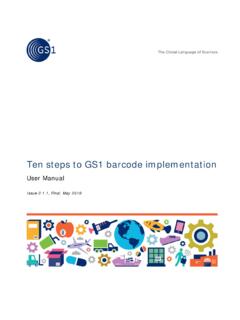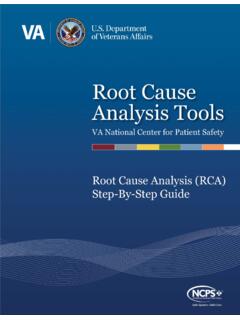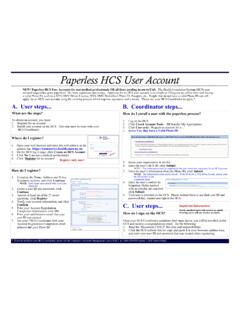Transcription of Untitled-2 [www.columbia.edu]
1 Gregg GundersenDepartment of Anatomy & Cell BiologyPhone: 305-1899E-mail: READING: Larsen s Human Embryology, 3rd Edition, : Fertilization is a cell-cell recognition process that occurs between two distinct cells: a smallasymmetric and motile sperm cell and a large and nonmotile egg. The stages of fertilization can be divided intofour processes: 1) sperm preparation, 2) sperm-egg recognition and binding, 3) sperm-egg fusion and 4) fusionof sperm and egg pronuclei and activation of the zygote. The specific structures of the sperm and egg that areimportant for fertilization will be discussed and experiments that led to the identification of the egg receptor forthe sperm and the sperm receptor for the egg will be described.
2 Membrane fusion of sperm and eggs is anincompletely understood process, but the discovery of proteins known as ADAM proteins on the sperm surfacehas suggested new mechanisms to explain sperm-egg fusion. Finally, we will consider how fertilized eggsprevent additional sperm from fusing (a condition known as polyspermy) and how the fertilized egg is activatedto begin OBJECTIVES:At the conclusion of the lecture you should be able to:1. Discuss the sequential nature of fertilization in which ordered changes in the gametes drive the process of fertilization toward Explain the role of specialized sperm and egg surface structures in Describe how egg and sperm receptors were Explain the current state of knowledge about sperm-egg membrane fusion and how spermcomponents are incorporated into the Describe how polyspermy is prevented and the fertilized egg is activated for :Capacitation: The process by which the sperm becomes capable of fertilizing an Reaction.
3 A regulated exocytotic event in which an apical vesicle in the sperm head fuses with thesperm plasma membrane. The acrosome reaction is triggered in response to egg : A serine protease released during the acrosome Reaction: A regulated exocytosis in which apically localized vesicles (cortical granules) in the eggfuse with plasma membrane after Pellucida: A coat surrounding the egg that contains three transferase: An oligosaccaride modifying enzyme that is usually found in the Golgi but in sperm ison the cell surface. Thought to be important as the sperm receptor for the : An ADAM family protein on the sperm implicated in sperm-egg membrane fusion.
4 Contains a fusionpeptide resembling viral fusion peptides and a disintegrin domain involed in recognition. 1-2 ADAM proteins: A family of proteins that contain A Disintegrin And Metalloprotease domain(s).Pronuclei: The transitional male and female nuclei formed in the egg after fertilization. They fuse toform the diploid zygote : The condition in which more than one sperm fertilizes an egg. Polyspermy leads todefective :There are four stages to fertilization:1. Preparation: Capacitation and acrosome reaction. Acrosomal vesicle fusion is the membranefusion event of this Binding: Species-specific interaction of Fusion: Merging of sperm and egg plasma membranes is the membrane fusion event of this Activation (of the zygote): Cortical reaction (fusion of cortical vesicles with the egg plasmamembrane) and pronuclear two gametes involved:Eggs:Eggs are large (~100 m), symmetrical and nonmotile cells (Fig.)
5 1-1). Human eggs are arrested in metaphaseof the second meiotic division and complete meiosis only upon fertilization. Their surface is covered bymicrovilli ( ). Eggs are surrounded by a zona pellucida (Fig. 1-3), which is a glycoprotein coatcomposed of three glycoproteins ( ZPGP I-III). All three of the glycoproteins contain O- and N-linkedoligosaccharides ( ). The zona pellucida is not an osmotic barrier (in fact, even virus are capable ofpenetrating it), however it is a barrier to the sperm. The zona pellucida is the species specific barrier tofertilization as shown by the hamster experiment.
6 Human sperm are incapable of fertilizing intact hamster eggs,but can fertilize hamster eggs stripped of their zona pellucida. This is used clinically to assess the fertilizingcapacity of :Sperm are small, asymmetrical and motile cells (Fig. 1-5). They have three components:1. Tail: Also referred to as the principal piece. The tail contains the flagellar apparatus, which iscomposed of 9 + 2 microtubules and accessory structures (Fig. 1-6). The sliding of the microtubule ispowered by the protein dynein. (Gibbons movie of sliding microtubules)2.
7 Midpiece: at the proximal portion of the tail. Midpiece contains a sheath of mitochondria, whichproduce the ATP necessary for the beating of the tail. 1-3 Fig. 1-5. 3. Head: contains the spermatic haploid the head is a membrane bound vesicle, theacrosome. Sperm do not possess any organellesassociated with protein synthesis (Golgi, RER orlysosomes).Fig. sperm plasma membrane is also highly differentiated and contains proteins localized in distinctregions (Fig. 1-7). One of these, termed PH-30 or fertilin, is localized in the equatorial region of thesperm and is involved in sperm-egg plasma membrane fusion (see below).
8 Acrosome:The acrosome is a lysosomal-like compartment derived from the Golgi. It has a low pH and containssoluble hydrolases (serine protease acrosin). In cross-section through the head of a sperm, one wouldcross four membranes in traversing from the plasma membranes to the nuclear membrane. During theacrosome reaction, fusion of the outer acrosomal membrane with the plasma membrane releases thecontents of the acrosome and exposes the inner acrosomal membrane as the functional outer boundary ofthe sperm Four Steps of Fertilization: step I. Preparation of the sperm are not ready to fertilize an egg when they enter the vagina.
9 In response to the dilutionof semen in the vagina, they undergo several changes, which are collectively known as capacitation. 1-4 Fig. Intracellular Ca++ levels Spermatic motility is activated and tails change Sperm cell surface antigens are lost. The loss ofthese proteins renders the sperm more receptive tobinding to the II. Sperm-Egg BindingBecause of the availability of gametes, the process ofsperm-egg binding was first studied and understood ininvertebrates (Fig. 1-8). In sea urchins, the sperm headbinds directly to the egg outer surface and this triggers theacrosome reaction.
10 ( and 1-10). The acrosomal contents arereleased and there is a balanced Na+ influx and H+efflux, causing an increase in pH. The increased pHtriggers the dissociation of the profilactin complex(actin and profilin) and the released actin monomerspolymerize to form a filament called the acrosomalprocess. This acrosomal process penetrates the eggcoatings to allow fusion of the sperm and egg plasmamembranes. In sea urchins then, the sperm literallyskewers the humans the process of sperm-egg binding is not sosimple. The complicating factor is the thick zonapellucida, which keeps sperm from binding close to theegg plasma receptor on Paul Wassarman used a competition assay to isolate and identify the factor in the zona pellucida thatwas involved in sperm egg binding (Fig.)



















